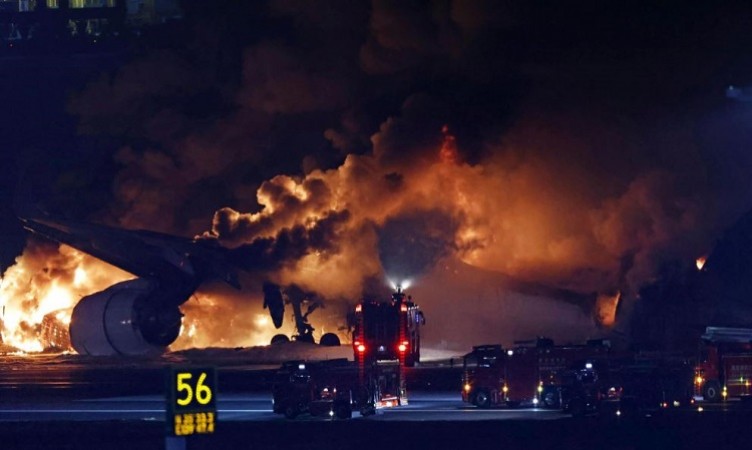
JAPAN: Authorities in Japan have launched investigations into a rare collision between a passenger jet and a coast guard plane at a Tokyo airport. The incident, which resulted in a fiery aftermath, has prompted scrutiny from transport authorities and law enforcement regarding a potential lapse in professional conduct.
The collision occurred at Haneda airport when a Japan Airlines (JAL) Airbus A350 collided with a De Havilland Dash-8 Coast Guard turboprop shortly after landing. Despite the plane bursting into flames, all 379 passengers on board the JAL flight managed a miraculous escape. Unfortunately, among the six Coast Guard crew members responding to a significant earthquake, five lost their lives, while the surviving captain sustained severe injuries.
Such runway collisions, though once a recurrent safety issue, have significantly reduced due to advancements in ground tracking technology and enhanced operational procedures, according to aviation experts.
Japanese authorities are yet to determine the exact cause of the crash, leading to an investigation by the Japan Safety Transport Board (JTSB). Notably, agencies from France, where the Airbus was manufactured, and Britain, where its engines were produced, are involved in the inquiry.
Reports suggest that the JTSB has retrieved flight and voice recorders from the coast guard aircraft. Concurrently, Tokyo police are exploring potential professional negligence contributing to the fatalities and injuries, though specific details about these concerns remain undisclosed.
Aviation analyst Hiroyuki Kobayashi, a former JAL pilot, commented, "There's a strong possibility there was a human error. Aircraft accidents rarely stem from a single issue, so multiple factors might have played a role in this incident."
Questions regarding the instructions received by the crews from air traffic control and how both planes ended up on the same runway have been raised in subsequent press conferences. JAL stated that the aircraft had acknowledged and repeated landing permissions from air traffic control before the incident.
Despite the successful evacuation of all passengers and crew within 20 minutes of the crash, the aircraft continued to burn for over six hours, according to the airline.
Recordings from air traffic control suggest that JAL flight 516 was given clearance to land at runway 34R a few minutes before the collision occurred. However, conflicting reports have emerged regarding instructions given to the Coast Guard plane, casting doubt on whether it was directed to approach and halt before the runway or proceed with takeoff.
The civil aviation bureau of Japan's transport ministry has refrained from immediate comments, and differing accounts about instructions given to the coast guard plane have further added to the complexity of the situation.
The Coast Guard has chosen not to provide details about the circumstances of the crash, contributing to the ongoing investigation. The collision resulted in the cancellation of numerous flights, both domestic and international, disrupting travel plans for many passengers.
Japan Earthquake Leaves 62 Dead, Rescue Operations Ongoing: Latest Updates
Russia Launches Fresh Assault on Ukraine Using Drones and Missiles
Breaking! Japan Airlines Plane Catches Fire After Alleged Coast Guard Aircraft Collision